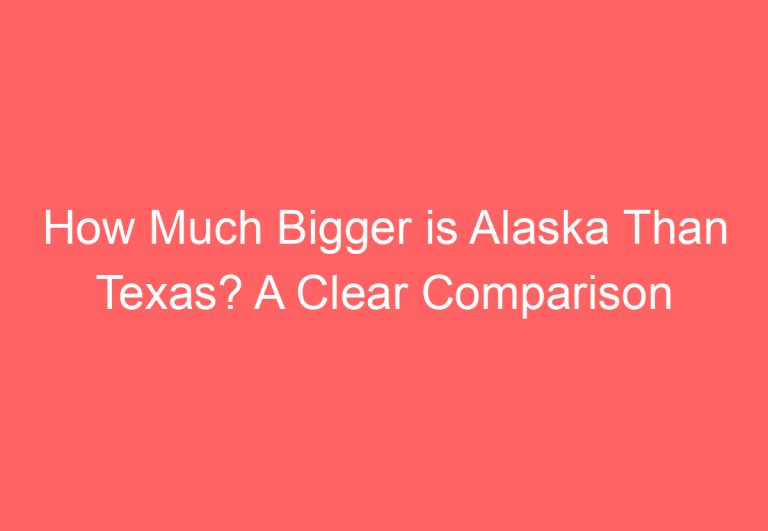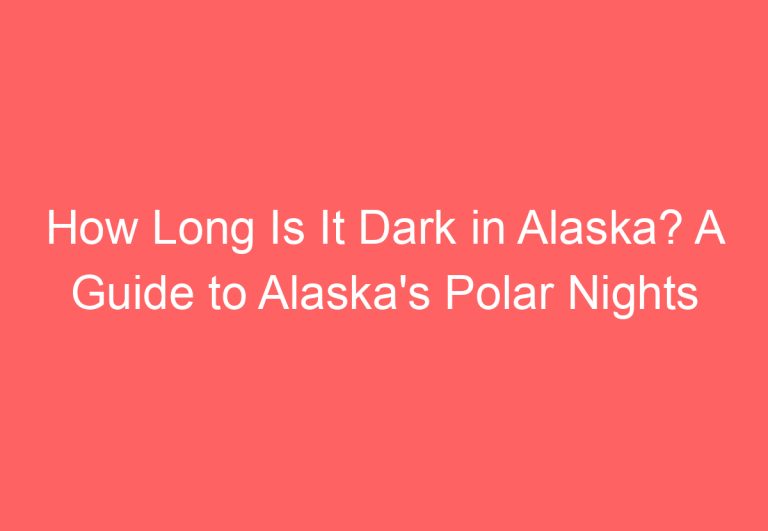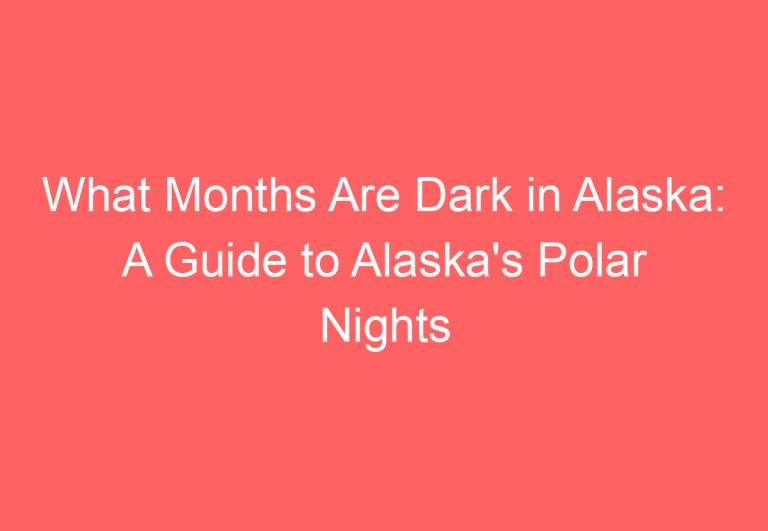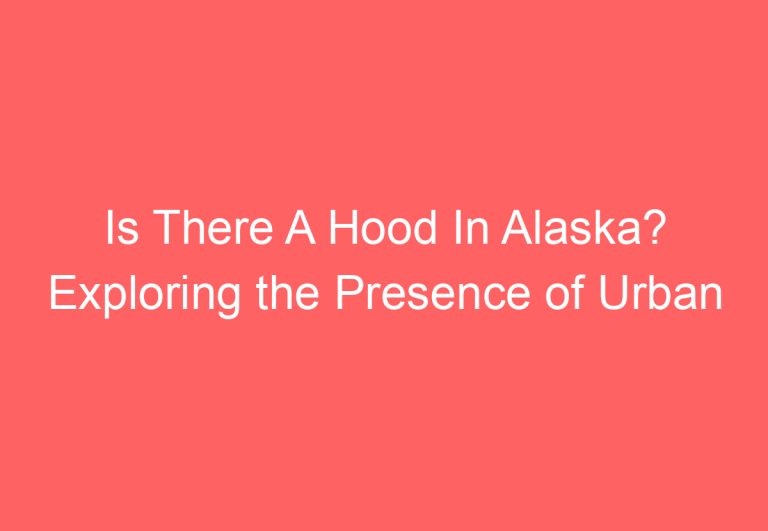Why Is Alaska’s Population So Low: Understanding the Factors
Alaska is the largest state in the United States, covering an area of over 663,000 square miles, yet its population is one of the smallest in the country. The question of why Alaska’s population is so low has been a topic of interest for many years. The state’s population has been declining in recent years, with the latest census data showing a decrease of 0.5% in 2020.

One of the main reasons for Alaska’s low population is its remote location. The state is located in the far north of the country, separated from the rest of the continental United States by Canada. This makes it difficult and expensive to travel to and from Alaska, which can deter people from moving there. Additionally, the harsh climate and long winters can also be a deterrent for some people.
Another factor contributing to Alaska’s low population is the state’s economy. While Alaska has a thriving fishing industry and is home to a number of natural resources, including oil and gas, the state’s economy is heavily dependent on these industries. When these industries experience downturns, as they have in recent years, it can lead to job losses and a decrease in population.
Demographic Factors Influencing Population Size

Alaska’s population is affected by various demographic factors, including birth and death rates, migration patterns, and population characteristics.
Birth and Death Rates
Alaska has a relatively low birth rate compared to other states in the US. According to the 2020 Census data, the state’s population growth rate was only 3.3% in the past decade, which is much lower than the national average of 7.4%. The state also has a high death rate, which contributes to the population decline.
Migration Patterns
Migration patterns also play a significant role in Alaska’s population size. Many people move to Alaska for job opportunities, but the harsh weather conditions and high cost of living often drive them away. The state has experienced a net population loss due to migration in recent years. According to the Alaska Department of Labor and Workforce Development, the state’s net migration was negative in 2019 and 2020, meaning more people left the state than moved in.
Population Characteristics
Alaska’s population characteristics also contribute to its low population size. The state has a relatively high percentage of older adults, which leads to a lower birth rate and contributes to the population decline. Additionally, Alaska’s population is not very diverse, with over 60% of the population identifying as white alone, according to the 2020 Census data. The state has a relatively small percentage of minorities, which can make it less attractive to people from diverse backgrounds.
In conclusion, Alaska’s population size is influenced by a variety of demographic factors, including birth and death rates, migration patterns, and population characteristics. The state’s low birth rate, high death rate, net population loss due to migration, and relatively homogeneous population all contribute to its low population size.
Economic and Geographic Determinants

Employment and Economy
One of the primary reasons for the low population of Alaska is its economy and the availability of jobs. While the state has been recovering economically, it is still hampered by negative demographic trends. The loss of working-age adults is poised to persist well into the future. The state lost roughly 46,000 jobs in the last four years. The high cost of living, especially in urban areas like Anchorage and Fairbanks, is another factor that makes it difficult for people to settle here.
Housing and Cost of Living
The cost of living in Alaska is high, which makes it challenging for people to afford housing and other daily necessities. Housing in urban areas is expensive, and the cost of living is even higher in smaller towns and boroughs. The Permanent Fund Dividend, which is paid to residents of Alaska, helps offset some of the costs, but it is not enough for many people to make ends meet.
Geography and Accessibility
Alaska’s geography and accessibility are also factors that contribute to its low population. The state is vast, with large areas that are difficult to access due to the lack of roads and infrastructure. Traveling within the state can be challenging, and many people find it difficult to get around. The state’s capital, Juneau, is only accessible by boat or plane, which makes it difficult for people to settle there. Smaller towns like Haines are even more isolated and challenging to reach.
In summary, Alaska’s low population is due to a combination of economic and geographic determinants. The state’s economy is recovering, but it is still hampered by negative demographic trends, which include a loss of working-age adults. The high cost of living, especially in urban areas, makes it difficult for people to settle in Alaska. The state’s vast geography and lack of infrastructure also contribute to its low population.
Frequently Asked Questions

What factors contribute to the low population density in Alaska?
Alaska’s low population density can be attributed to several factors. Among them are the state’s harsh climate, remote location, and limited economic opportunities. With the majority of the state’s population concentrated in a few urban areas, the vast majority of Alaska remains sparsely populated.
How does Alaska’s harsh climate impact its population size?
Alaska’s climate is one of the most extreme in the world, with long, cold winters and short, mild summers. The harsh weather conditions make it difficult for many people to live in the state year-round. In addition, the lack of sunlight during the winter months can lead to seasonal affective disorder (SAD), a type of depression that affects many Alaskans.
In what ways does Alaska’s geographical location affect its population?
Alaska’s remote location is a major factor in its low population density. The state is separated from the rest of the United States by Canada, and is only accessible by air or sea. This makes it difficult and expensive to transport goods and people to and from the state.
What economic challenges lead to people relocating from Alaska?
Alaska’s economy is heavily dependent on the oil and gas industry, which has experienced significant fluctuations in recent years. The state also has a high cost of living, which can be a major challenge for many residents. In addition, the lack of economic opportunities in many parts of the state can make it difficult for people to find work.
How has Alaska’s population changed over recent years?
Alaska’s population has been declining in recent years, with the state losing nearly 4,000 residents between 2019 and 2020. This trend is largely due to a combination of factors, including a low birth rate, an aging population, and a high rate of outmigration.
What role do wildlife populations play in Alaska’s human settlement patterns?
Alaska’s wildlife populations are a major attraction for many residents and tourists alike. However, they can also pose a threat to human settlements, particularly in rural areas. Encounters with bears, moose, and other large animals can be dangerous, and can discourage people from living in certain parts of the state.






